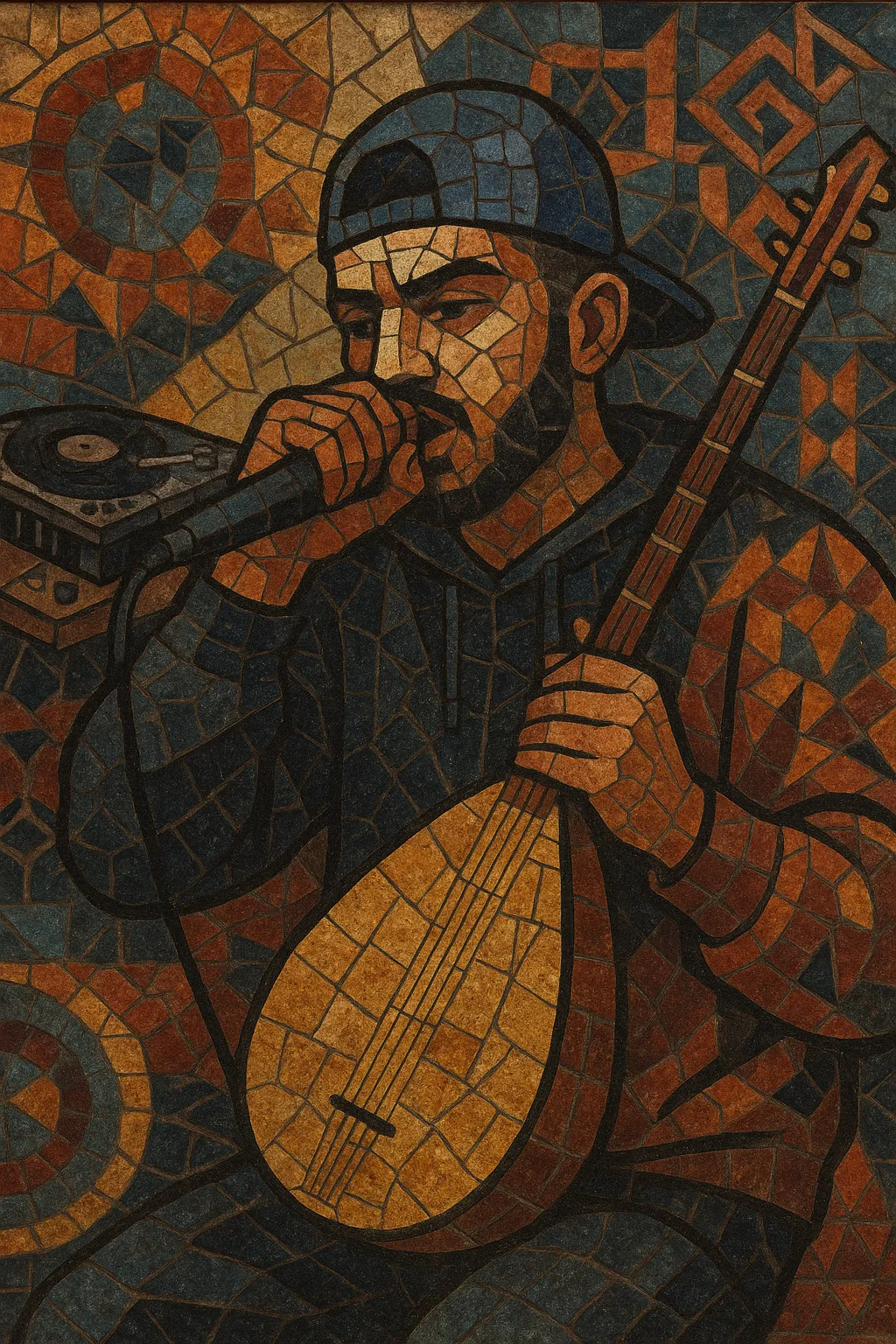Turkish hip hop is a rap tradition that emerged from the Turkish diaspora—especially in Germany—before taking root in Turkey itself. It blends the core aesthetics of hip hop (MCing, DJing/production, sampling) with Turkish-language delivery, code‑switching (often Turkish–German), and heavy use of regional melodic material.
Sonically, the genre spans classic boom‑bap and G‑funk to contemporary trap. Producers frequently sample or reference Anatolian rock and arabesk, incorporate bağlama (saz), darbuka-style percussion, and modal colors related to makam (e.g., Hicaz, Hüseyni). Lyrically, it addresses migration, identity, social inequality, street culture, politics, and generational change—ranging from gritty reportage to introspective storytelling and protest.
From pioneers like Cartel, Killa Hakan, Fuat, Ceza, and Sagopa Kajmer to a trap-informed wave led by Ezhel, Şehinşah, Uzi, Murda, and Ben Fero, Turkish hip hop has grown into one of the most visible and debated popular forms in contemporary Turkish-language music.
Turkish hip hop coalesced in German cities with large Turkish communities (Berlin, Nuremberg, etc.) as second‑generation migrants used rap to express experiences of displacement, discrimination, and identity. Crews and projects such as Cartel (whose 1995 compilation became a landmark), Islamic Force, Killa Hakan, and Fuat helped establish a Turkish‑language rap voice alongside German hip hop. The sound leaned on boom‑bap and G‑funk while sampling Anatolian rock and arabesk—bridging street narratives to Turkish melodic memory.
By the 2000s, the style took firm hold in Turkey. Ceza and Sagopa Kajmer (including earlier work tied to the group Nefret) pushed technical lyricism, rapid flows, and battle aesthetics to mainstream visibility. Independent labels, mixtapes, and early forums/online communities nurtured a national scene while producers refined a hybrid palette—hard drums and 808s with bağlama timbres, oriental scales, and dramatic hooks.
Streaming and social platforms amplified a new generation shaped by trap and Auto‑Tune. Artists like Ezhel, Şehinşah, Uzi, Murda (Dutch‑Turkish), Ben Fero, and others broadened the genre’s reach with melodic flows, club‑ready beats, and high‑gloss videos, while still engaging social critique. Collaborative moments—most visibly the 2019 protest cypher "Susamam" (curated by Şanışer)—spotlighted the scene’s activist thread and drew international attention.
Across three decades, Turkish hip hop has remained a conversation between global hip hop idioms and local heritage. Its signatures—bilingual slang, arabesk pathos, Anatolian samples, and confrontational yet melodic delivery—have made it a distinct pillar of both Turkish popular music and the wider European rap landscape.


